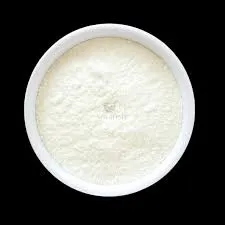
Вер . 23, 2024 06:37 Back to list
hydroxyethyl cellulose manufacturing process
The Manufacturing Process of Hydroxyethyl Cellulose
Hydroxyethyl cellulose (HEC) is a non-ionic, water-soluble polymer derived from cellulose, and it is widely used in various industries, including pharmaceuticals, food, cosmetics, and construction. The manufacturing process of HEC involves several crucial steps that ensure the production of high-quality and consistent products.
Raw Material Preparation
The production of HEC begins with the selection of high-purity cellulose as the primary raw material. Cellulose is typically sourced from wood pulp or cotton linters. The selected cellulose undergoes an initial purification process to remove any impurities, such as lignin and hemicellulose, as these can adversely affect the final product's performance. Once purified, the cellulose is pre-treated with an alkaline solution, which helps to swell and breakdown the cellulose fibers, making them more reactive during the etherification process.
Etherification
The next step in the manufacturing process is etherification, where the pre-treated cellulose is chemically modified to produce hydroxyethyl cellulose. This involves the reaction of cellulose with ethylene oxide in the presence of a catalyst. The reaction occurs in a controlled environment, typically under specific temperature and pressure conditions, to ensure optimal conversion rates and product quality. During this process, the ethylene oxide substitutes hydroxyl groups on the cellulose backbone with hydroxyethyl groups, resulting in a hydrophilic product.
Neutralization and Purification
After etherification, the resulting HEC mixture often contains unreacted raw materials and by-products. To remove these impurities, the mixture undergoes a neutralization step, where the reaction mixture is treated with an acid to neutralize the catalyst and any remaining alkali. Following neutralization, purification is performed through various methods, such as precipitation, centrifugation, or filtration, to isolate the pure HEC.
hydroxyethyl cellulose manufacturing process

Drying and Milling
Once purified, the HEC product is typically in a wet form. To obtain the final powdered product, the wet HEC is dried using techniques such as spray drying or tray drying, which removes the moisture content while preserving the polymer's structure and properties. The dried product is then milled to achieve a fine powder with a controlled particle size. This step is critical as the particle size affects the solubility and functionality of the HEC in applications.
Quality Control
Quality control is an essential aspect of HEC manufacturing. Throughout the production process, samples are collected and tested for specific parameters, including viscosity, purity, and pH. This ensures that the final product meets the required specifications and performance standards. Various analytical techniques, such as viscometry and chromatography, are employed to guarantee consistency and reliability.
Packaging
Finally, the finished hydroxyethyl cellulose is packaged in moisture-proof bags or containers, preserving its quality during storage and transportation. Proper packaging is vital to protect the product from contamination and degradation, ensuring that it retains its functional properties until it reaches the end-user.
Conclusion
The manufacturing process of hydroxyethyl cellulose involves a series of meticulously controlled steps, from raw material preparation to final packaging. By adhering to strict quality control measures, manufacturers can produce high-purity HEC that meets the diverse needs of various industries, highlighting its importance as a versatile polymer in today's market.
-
The Widespread Application of Redispersible Powder in Construction and Building Materials
NewsMay.16,2025
-
The Widespread Application of Hpmc in the Detergent Industry
NewsMay.16,2025
-
The Main Applications of Hydroxyethyl Cellulose in Paints and Coatings
NewsMay.16,2025
-
Mortar Bonding Agent: the Key to Enhancing the Adhesion Between New and Old Mortar Layers and Between Mortar and Different Substrates
NewsMay.16,2025
-
HPMC: Application as a thickener and excipient
NewsMay.16,2025
-
Hec Cellulose Cellulose: Multi functional dispersants and high-efficiency thickeners
NewsMay.16,2025







